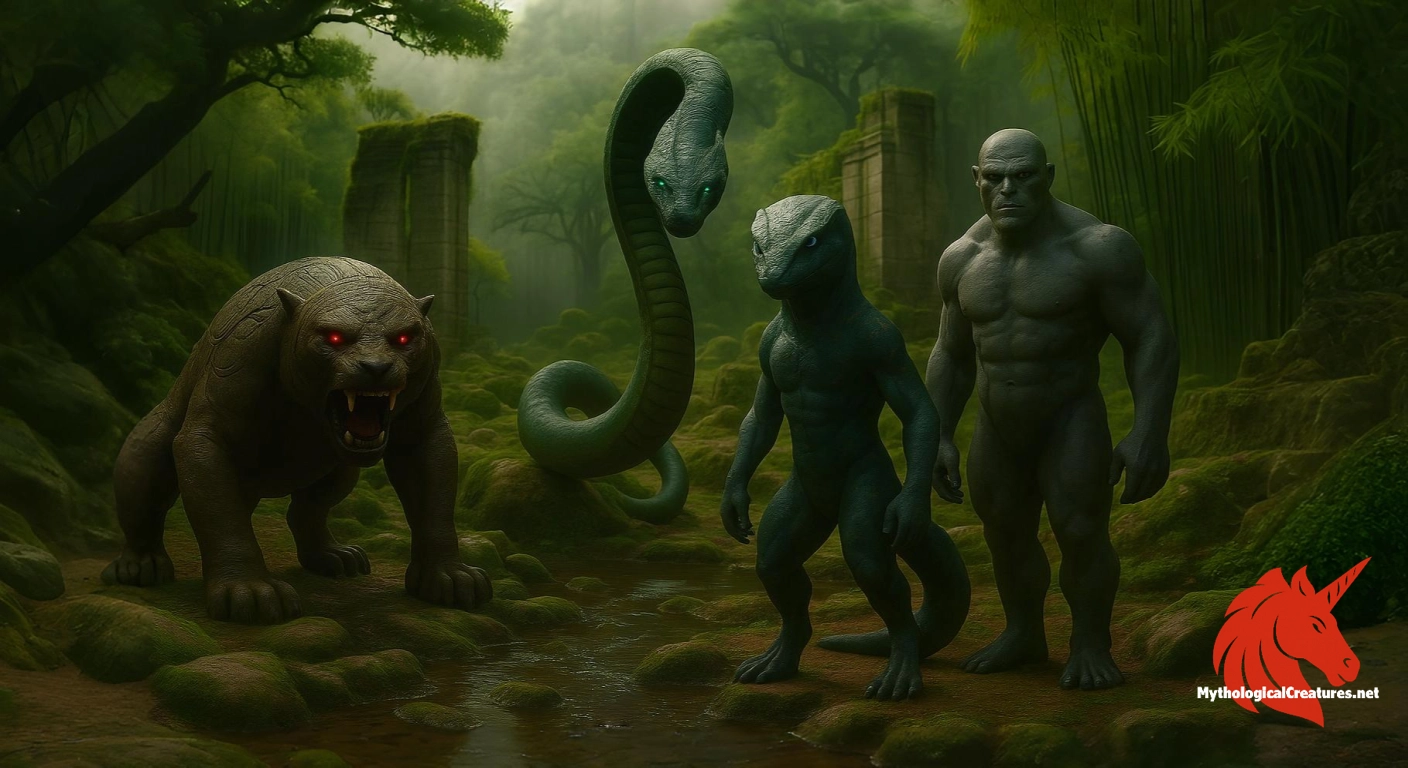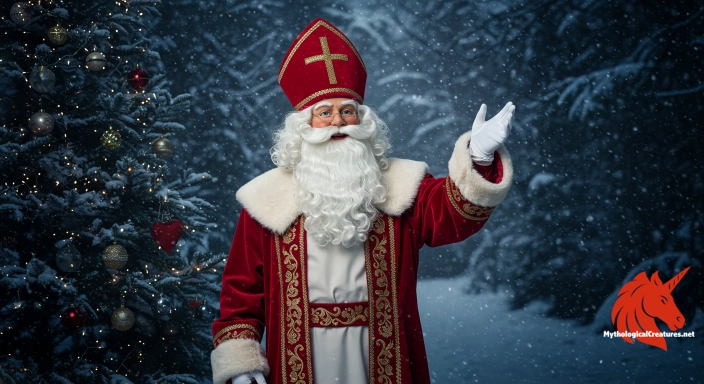Four Perils: The Four Perils are a quartet of malevolent beings from Chinese mythology.

Four Perils
Four Perils - They embody the chaotic and evil forces within the mythological tradition, often used to explain misfortune and disaster.
Origins & First Encounters
The Four Perils stand as a formidable group of malevolent entities within the rich tapestry of Chinese mythology. Their origins trace back to ancient folklore where they began as allegorical representations of chaos and destruction. Emerging in the primordial layers of myth, they were first attested in early cultural narratives that wove together elements of nature’s fury with divine retribution. Over time, these beings became emblematic of both supernatural danger and the moral dilemmas facing ancient society. They were conceived not just as literal creatures but as symbolic manifestations of disorder, challenging the cosmic balance. Early mythmakers used them to caution against the consequences of moral and social corruption. Their presence was intertwined with natural phenomena and seasonal cycles, embedding them deeply in the cultural consciousness. Even now, the Four Perils evoke a sense of awe and dread, representing the eternal struggle between order and chaos.
Source Texts & Tale Variants
Ancient texts and oral traditions have long served as the primary conduits for the lore surrounding the Four Perils. Various early Chinese records, though fragmentary, allude to these fearsome beings within their mythological compendiums. Literary works and dynastic chronicles often hint at their role as harbingers of calamity, creating a multifaceted narrative over successive generations. Many of the earliest accounts appear in collections of myth and legend, where the perils are woven into broader cautionary tales. The stories have also been preserved in local folktales, transmitted through generations by storytellers and community rituals. In some versions, the perils take on abstract forms, symbolising diverse aspects of natural and societal decay. These legendary accounts have been adapted and reinterpreted as they passed from one region to another, resulting in a rich array of story variants. The evolution of their depiction highlights the dynamic interaction between written records and the communal memory of ancient cultures.
Form & Powers
Descriptions of the Four Perils are as varied as the traditions that recount their exploits. In many depictions, these entities are shown as a fusion of animalistic and supernatural traits, manifesting in forms that blur the line between beast and spirit. One image might reveal a serpentine body coupled with a fearsome visage, while another emphasises towering horns and glowing eyes that pierce the darkness. Their complex anatomy is often adorned with rugged textures, such as scales or rough, weathered skin that speaks of ancient power. Some artistic renditions reveal multiple eyes, contorted limbs, or even extra appendages that challenge the natural order. The interplay between subtle elegance and overt savagery in their features serves to underline their dual role as both irresistible and terrifying. Many narratives emphasise a spectral aura surrounding these beings, as if they are not wholly of this world but remnants of primordial chaos. The physical portrayal of the Four Perils, varying from one account to another, continuously invites onlookers to contemplate the nature of evil and the sublime terror it inspires.
Regional Faces
The characterisation of the Four Perils changes significantly across different regions of China. In some northern accounts, they are depicted as colossal beasts whose appearance is closely linked to the brutal forces of winter and famine. Southern traditions, in contrast, often portray them as elusive, almost ghostly figures that haunt the misty, dense landscapes of the rural hinterlands. Local adaptations have imbued these beings with distinct attributes that mirror regional environmental challenges and societal concerns. For example, while one area might focus on their role as disruptive agents of natural calamities, another might emphasise their connection to moral decay and the collapse of order. Such adaptations have led to varied ritual practices and protective ceremonies designed to ward off their influence. Cultural festivals and local theatre have also drawn upon the imagery of the Four Perils to symbolise seasonal transitions and the balance of nature. The diversity in their portrayal reflects the intricate relationship between place, belief, and the timeless human drive to personify and combat evil.
Cultural Parallels
Cross-cultural comparisons reveal that the theme of grouping malevolent entities is not unique to Chinese mythology. Similar in function to the Four Horsemen of the Apocalypse in Western lore, these beings also serve as symbols of inevitable chaos and destruction. In East Asian contexts, parallel figures can be found in Japanese folklore, where various malicious spirits and yōkai echo the destructive aspects embodied by the Four Perils. Beyond East Asia, many cultures have developed their own classifications of evil forces that serve to underscore the fragility of human order in the face of overwhelming chaos. These comparative analyses highlight a shared human impulse to confront and catalogue the darker elements of existence. While the cultural specifics differ, the universal role of such entities as agents of warning and transformation remains a constant. The allegorical utility of these figures in representing natural disasters, moral decay, and cosmic imbalance resonates across diverse mythological landscapes. Ultimately, the Four Perils stand as one instance within a broad tradition of mythmaking that seeks to map the boundaries between order and disorder.
Legacy & Modern Evolution
Over the centuries, the depiction of the Four Perils has shifted dramatically to reflect evolving cultural and societal preoccupations. In the earliest myths, they were portrayed as literal embodiments of chaotic natural forces, intended to warn communities of the perils of straying from moral and cosmic order. With the passage of time, their representations have grown more symbolic, often serving as metaphorical reflections of inner turmoil and societal disintegration. During the imperial eras, visual and literary arts reimagined them in dramatic allegories that resonated with courtly tastes and political narratives. In modern times, the Four Perils have been reinvented through literature, film, and contemporary art, where they appear as both literal monsters and as symbols of societal anxieties. They are frequently used in modern media to evoke themes of environmental destruction, loss of tradition, and the crisis of modernity. Contemporary reinterpretations often blend traditional imagery with new narrative forms, making them relevant to a global audience. The enduring legacy of these mythic figures lies in their capacity to be continuously recontextualised, ensuring that they remain a potent emblem of both ancient fears and modern challenges.
Interesting Fact
An intriguing aspect of the Four Perils is their collective nature, as each embodies a distinct form of evil while together representing a unified force of chaos.
Quick Creature Info
Features:
Associations:
Our Mythic Legendary Rating:

Also Sometimes Known As:
Supernatural Powers:
Physical Attributes:
Abilities:
Behavior:
Lore:
References
Discover Another Mythical Legend You May Not Have Heard Of?
Uncover the mysteries of ancient folklore and expand your knowledge of legendary beings from cultures around the world.
Dare to Meet the Père Noël....
Mythical Disclaimer: The images and data on this site are derived from various historical and literary sources, but we have found that many myths often have multiple versions and interpretations across references, sometimes contradictory. As a result, these creature depictions are artistic interpretations—imaginative blends of folklore, legend, and a dash of AI guesswork. Because creature descriptions vary widely, our illustrations and accompanying information represent our best effort to honor mythology while bridging creative gaps. Enjoy these interpretations—just remember, we've done our best to respect the stories and validate available data, but in the realm of mythology, details often shift, imagination leads the way, and nothing is ever set in stone!
Curated by the Mythological Creatures Team (rev. May 2025)
